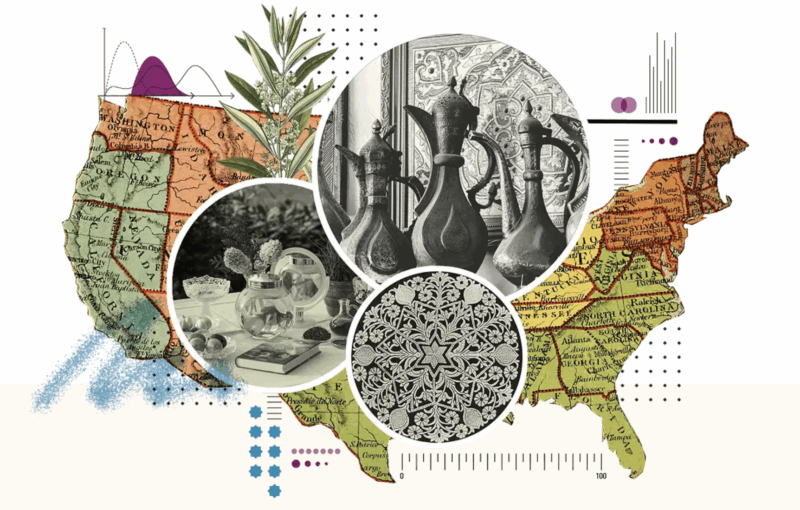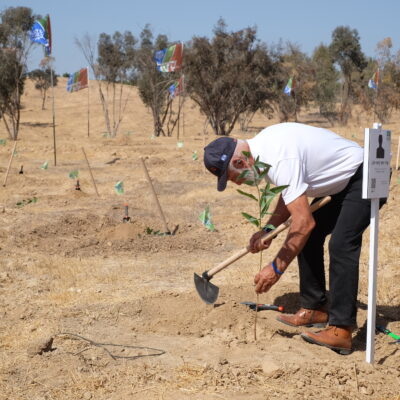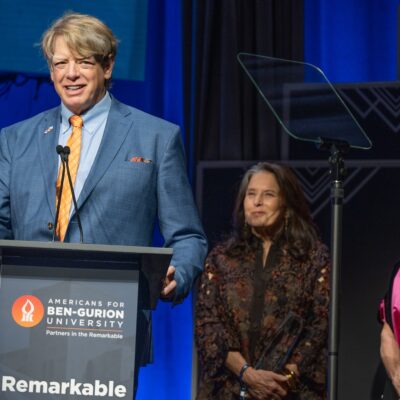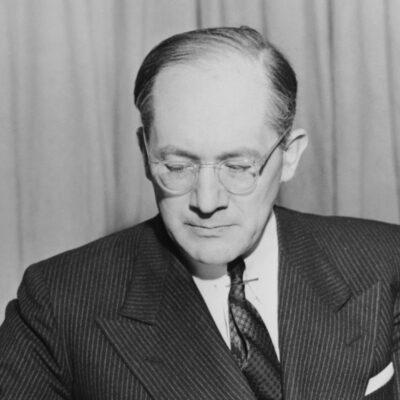SURVEY SAYS
‘We need to have this data’: JIMENA shares findings from 1st national study of Sephardic and Mizrahi American Jews

JIMENA
As the executive director of JIMENA: Jews Indigenous to the Middle East and North Africa since 2010, Sarah Levin has repeatedly received the same questions from funders: How many Sephardic and Mizrahi American Jews are there and what do we know about them?
“I would always have to tell them, ‘We don’t have good research. There’s no good data. We’ve never been studied despite being the oldest Jewish community in the United States,” Levin told eJewishPhilanthropy.
After receiving a grant from the Jewish Community Response and Impact Fund three years ago, JIMENA took on the task of answering these questions.
“There was finally an understanding amongst certain philanthropies that we need to have this data,” Levin said. “In order for us to create a more inclusive Jewish ecosystem, we need to know who Sephardic and Mizrahi Jews are.”
Today, JIMENA released its study, “Sephardic and Mizrahi Jews in the United States: Identities, Experiences and Communities,” the first-ever national demographic study of these groups. The results paint a portrait of communities with many similarities — tight family ties, deep connections to Judaism and Israel — but also great diversity between them.
The research, directed by Mijal Bitton, a visiting researcher at the NYU Wagner Graduate School of Public Service, included quantitative and qualitative data. Quantitative data was taken from national and communal surveys, including the Pew Research Center’s 2020 survey of U.S. Jews; while qualitative data was gathered from the Brooklyn’s Syrian community and the Bukharian community in Queens, the Persian community of Los Angeles and South Florida’s Latin Sephardic community.
The study found that Sephardic and Mizrahi Jews combined account for 10% of the Jewish population in the U.S. Bitton was moved “to see how proud people are of their communities,” she told eJP. Sephardic and Mizrahi Jews interviewed by the research team had “a very strong sense of collective identity.”
“They express a morality and a worldview that is much more connected to being part of a group. It’s very focused on the idea of family, and that sometimes pushes against a more liberal, individualistic ethic that is very prevalent in the West,” she explained.
The study makes several recommendations, including avoiding centering American Jewish narratives on the Ashkenazi journey and cultural norms and not viewing Sephardic and Mizrahi identities through the lens of “marginalized peoples” or victim narratives.
“Very often the discourse around diversity can become a little bit shallow,” Bitton said.
While some Sephardic and Mizrahi Jews identify as Jews of color, the majority don’t. According to Bitton’s research, which was pulled from local community surveys in Chicago, Los Angeles, Greater MetroWest NJ, Kansas City, Long Beach, Calif., Louisville, Kent., and Delaware, 12% of Sephardim and 17% of Mizrahi Jews identified as a “person of color.” In fact, in qualitative interviews, many bristled at the term. “We found a lot of opposition to a very racialized discourse as being the main discourse to describe the Sephardic/Mizrahi experience in the U.S.,” Bitton said. “And we found a lot of concerns around DEI, or other efforts like that, to be the primary efforts through which to include Sephardic and Mizrahi Jews.” Many of the Sephardic and Mizrahi Jews interviewed in the study lean politically moderate or conservative. Terms like “Jews of color” may simply not fall within their worldview.
“Others would express a sense of ‘Why are you trying to divide us into different categories if we don’t need to do that?’” she said. “Some of it was just that it’s just not the language that is used.”
Race and ethnicity break down differently outside of America, Bitton pointed out. “Racial discourse in America is very American… You go to Argentina, where I’m from, and we have our own racial and ethnic divisions. Sometimes there is a sense that there is a superimposition of certain American racial categories that actually do not take into account any of the developments, migrations and other aspects of the way that communities and individuals develop.”
Levin hopes the study will push “diversity work and [lift] it away from just racial and ethnic diversity, moving it towards something that is reflective of all of our diversities and our Sephardic and Mizrahi heritage.”
Another way Sephardic and Mizrahi communities often don’t fit neatly into American categories is the way much of the American Jewish community is split into denominations, such as Reform, Conservative and Orthodox, which have roots in Europe. Sephardic and Mizrahi Jews commonly see themselves as “traditional” and report higher rates of religious practice. For instance the study found that 80% of Mizrahi Jews and 65% of Sephardic Jews reported fasting on Yom Kippur, compared to 48% of Ashkenazi Jews.
The study also found that 27% of Mizrahi and Sephardic Jews are “economically vulnerable,” which surprised Levin. Though the statistics are painful to look at, she hopes the survey leads to these families and individuals getting the support and services they need.
For the qualitative research, the study focused on four communities with post-1965 immigration patterns. That year is when President Lyndon B. Johnson signed the Immigration and Nationality Act of 1965, which abandoned previously discriminatory quotas that favored Northern and Western Europeans, allowing a surge of immigrants from the Middle East.
Once established, some communities began trends of “ethnic replenishment,” Bitton said, referencing a term coined by Stanford professor Tomás Jiménez. This occurs when new waves of immigrants to communities revitalize ethnic identity and cultural practices of the immigrants who came before. The Syrian community in Brooklyn, according to the study, began immigrating to the U.S. in the late 1800s and continued to absorb immigrants until 1994, with each new wave enhancing the community’s cultural identity.
There were many commonalities between the communities studied: family-centered lives, weekly Shabbat practices, intergenerational ties, low intermarriage rates compared to Ashkenazim, collective values and Zionism. But there were also many differences — some rooted in the reasons the communities came to America in the first place, whether it was for economic reasons or because they were fleeing persecution.
The diversity within the results “made for a very complicated and also exciting research project in which you really have to think through the fact that you are representing, on the one hand, like populations, on the other hand, many different communities and individuals that feel very different from each other,” Bitton said.
Funding for the study was provided by the Jewish Community Response and Impact Fund, a partnership which included the Jim Joseph Foundation, Charles and Lynn Schusterman Family Philanthropies, Paul E. Singer Foundation, the Diane and Guilford Glazer Foundation and Maimonides Fund, with additional funding from UJA-Federation of New York and the Jewish Federation of Greater Los Angeles.
Levin hopes that this study helps Sephardic and Mizrahi Jews “feel recognized, and they understand that we’re paying attention, and that the Jewish community is paying attention, and they’re not on the margins.”
Sephardic and Mizrahi are terms representing broad groups of people, and this study was not exhaustive, Bitton said. Instead, she hopes the study will inspire further research.
“I don’t think that every institution or every individual needs to adopt all of [the study’s recommendations],” she said. “but I do think that they are important to grapple with and to consider, particularly for Ashkenazi majority institutions and spaces that self-identify as wanting to be more inclusive and as wanting to better understand Sephardic Jews.”

 Add EJP on Google
Add EJP on Google









